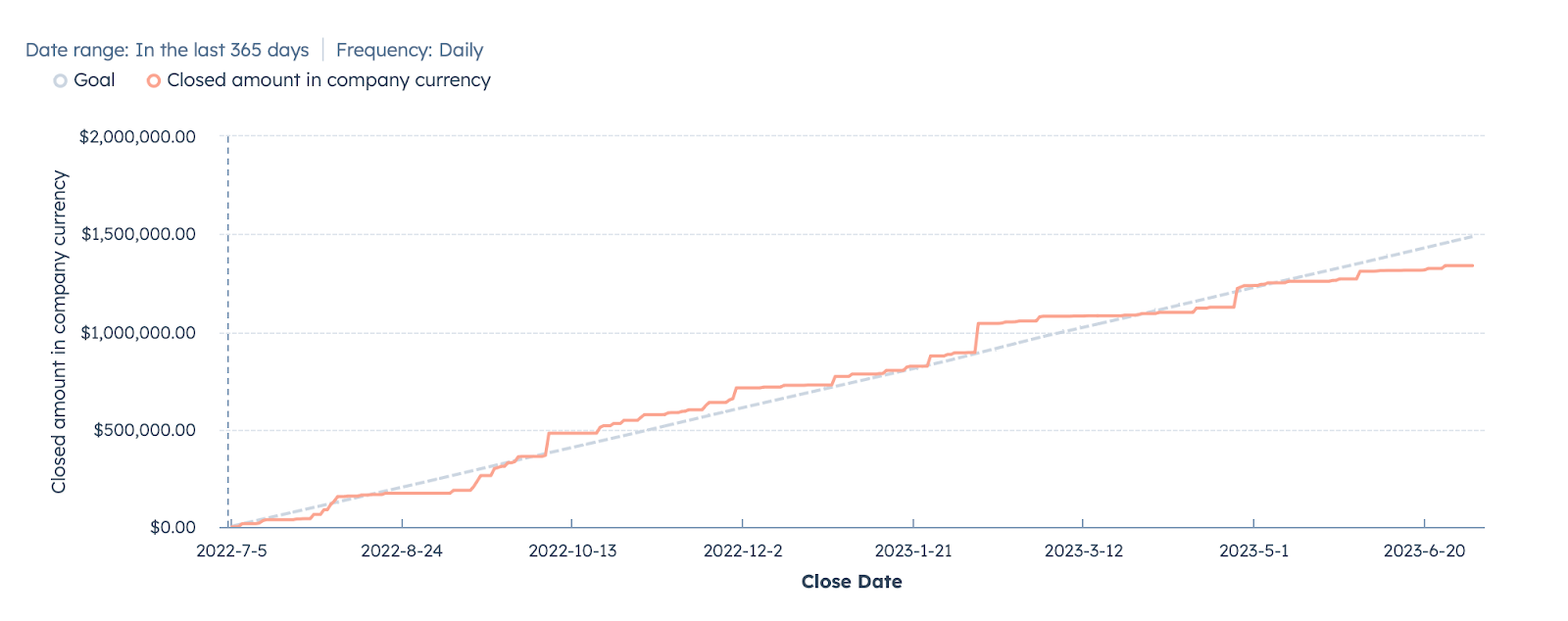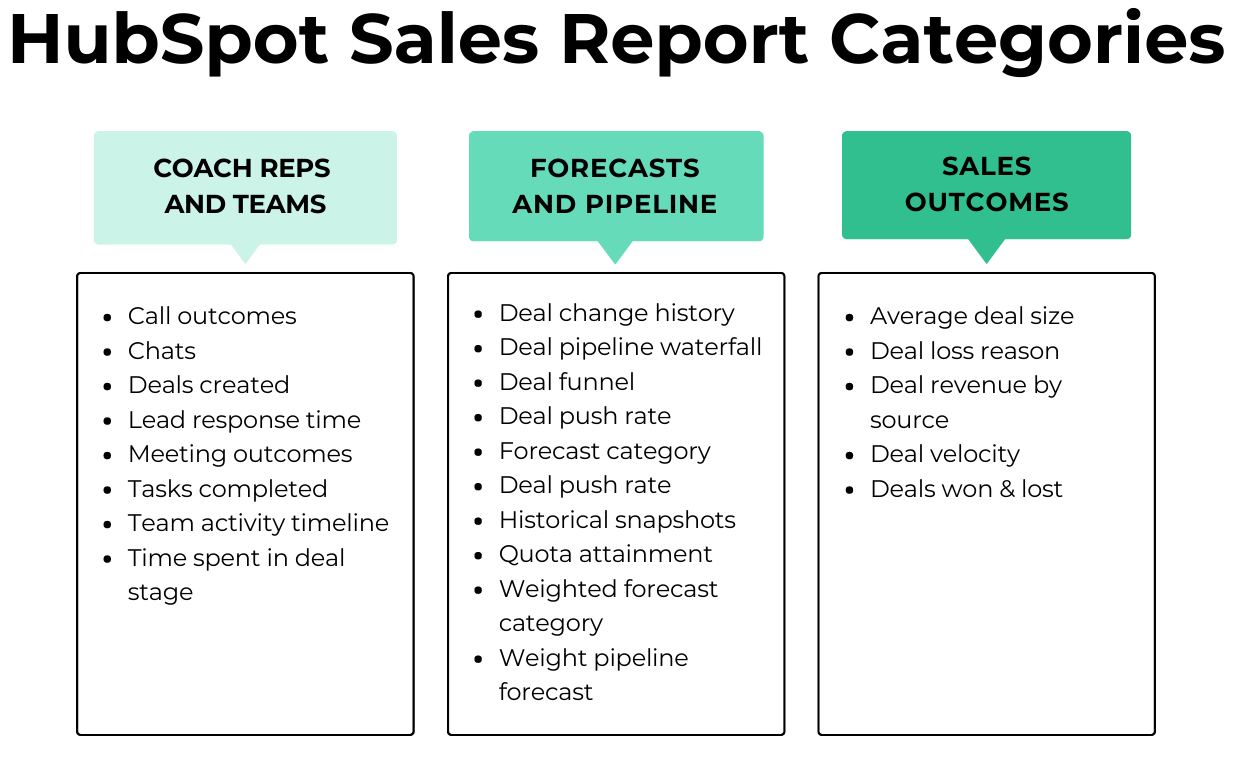Imagine flying a plane with no gauges or instruments on your dashboard. It’s just you and the steering wheel coasting through the air maybe with a friendly copilot to chat with. You assume you’re doing fine because you’re in the air and see the clouds around you. You’re flying.
But what if something goes wrong? There could be subtle problems that you don’t notice or issues with the mechanics you can’t diagnose. Suddenly you’re losing altitude and you don’t know why or how to fix it.
Businesses are often likened to planes, and if that’s so, then your sales reports are the instruments that give you the insights you need to hone your sales process and perform well. At a glance, they’re a pulse check on your organization. In depth, they’re helpful reports that allow you to evaluate your sales team’s performance and revenue sources.
Because sales reports are integral to business success, I brought in an expert to help me break down why you need them and what to look for. Lone Fir Marketing Manager Ashlee Rolkowski explains the basics of sales reports and why you should use HubSpot’s reporting tools to support your sales team.
Why You Need Reporting
Few industries are unchanging. In fact, most of them see rapid periods of change both in their markets and target audiences. During these times, those who can’t adjust often fall behind.
“Having sales reports in your sales CRM not only allows you to keep track of individual sales rep performance,” Ashlee explains, “it also lets you keep a pulse on revenue indicators so you can shift and adapt before it’s too late.”
She adds that although monitoring closed/won deals is important, that metric alone can’t give you a forecast of future revenue based on your pipeline. With sales reports, you can track indicators like new opportunities, contracts sent and number of marketing leads, which all give you a healthier view of your forecasted revenue.
Without sales reports (and other sales analytics tools), you wouldn’t be able to see how this change affects your cash flow and gross profit margin. It might even be tough to see if salespeople are hitting their annual goals because their peak selling period was just shortened. These are details you need to know so you can adjust your sales strategy for the next year, ensure your team is effective and protect your profit margin.
In addition to making you more adaptable, sales reports can also:
- Provide data-driven insights about individual sales reps’ performance to identify who might need coaching or extra training.
- Help you make quick, informed decisions to drive growth.
- Motivate your team to go above and beyond by showing them tangible results of their efforts.
What Should Be In Your Sales Reports?
Now that you can see why reporting is important, let’s dig into what metrics you should focus on. Ashlee recommends keeping track of five particular KPIs.
#1 Pipeline
“It’s helpful to track how many deals are in each stage and how much potential revenue is in each stage,” Ashlee says. “This allows you to get a quick idea of how healthy your pipeline is and if you’re likely to reach your revenue goals for that month or quarter.”
She adds that the HubSpot sales pipeline has lots of extra features that can help your team, including automation. You can add average deal close rates for each stage of your pipeline, which allows you to project a weighted forecast. This creates a more accurate view of which contracts are bringing in what revenue and allows you to plan accordingly.
You can also look at metrics like average deal size, deal stage, average time to close deals, deal amounts, and deal forecasting.
#2 Individual and Overall Close Rates
This metric allows you to evaluate sales performance on the individual and team levels. You can view the individuals’ sales activities to see what they’ve been working on, what their close rate is and how that contributes to the overall team’s sales metrics.
“Close rates help you understand the quality of the leads you’re getting and your team’s ability to close those deals,” Ashlee says. “It also gives you an idea of how many leads you need in order to close your projected number of deals.”
This is one metric that can help both your sales and marketing teams. When your sales team can accurately forecast how many leads they need to reach their goals, your marketing team can pitch in by upping lead generation efforts and optimizing to capture and convert the most qualified leads.
#3 Closed/Won Deal Source
This report will show you where your closed/won deals come from. For example, you might get a lot of leads from LinkedIn but very few of them actually become customers. Or you might get lots of leads from an email campaign and most of them become customers.
“It helps you understand your most successful and valuable channels so you can spend your time and energy there instead of on efforts that don’t produce the results you need,” Ashlee says.
#4 Qualified vs. Unqualified Leads
You don’t want to waste time nurturing a conversion that is never going to happen. That’s why you need a way to determine what constitutes a qualified and unqualified lead, plus a report that measures how many of each you’re receiving.
“This is another way to measure both the quality of your leads and how your sales reps approach each sales conversation.”
If your team has a high closed/lost rate, but it’s mostly due to conversations with unqualified leads, then you have a problem earlier on in your pipeline. Again, this is a place where sales and marketing can collaborate to ensure you’re bringing the most qualified leads possible into your pipeline.
Additionally, if you’re working in HubSpot, you can take advantage of their lead scoring tools to immediately assign new contacts a score based on probability to close. This is just another way to help your sales team focus on the most likely prospects.
#5 Revenue Closed vs. Goal Tracker
This is one of Amanda’s favorites (our Sales and Marketing Director). This report shows how the amount you’ve closed to date tracks against your daily, weekly, monthly, quarterly or annual revenue goal.
“It’s an easy way to keep a pulse on your performance over time versus just seeing the shifts that happen day-to-day,” Ashlee adds.
Within HubSpot’s sales reporting tool, you can choose to share this tracker with your entire team or keep it private to just your sales managers. Sharing with the team can motivate your reps to keep pushing toward those company goals. If you choose to keep it close to the chest, encourage your team members to create their own tracker where they can see personal progress toward their individual benchmarks and goals.

HubSpot Sales Reporting
So you know what to put in your sales report, but where do you get the data to make one? What platform do you use to generate it?
When it comes to creating your sales reports, we’re partial to using HubSpot. The inbound marketing platform collates data from your CRM and Sales Hub to generate detailed reports that accurately reflect your current business performance.
Sales reports are available in the Sales Hub Pro and Enterprise plans. With Pro, you get access to 100 custom reports. Enterprise gives you access to 500 custom reports. These thresholds are designed to match your team and business size, so as long as you’re in the right tier for your business, you shouldn’t have issues with the limits.
“Before you start building reports and even your database, you need to identify the KPIs for your business overall,” Ashlee recommends. “Then you can create sales goals based on that, which will inform the type of reports you need to build.”
HubSpot also helps you connect your team with its sales reporting and analytics, which is especially helpful if you’re a remote company or have remote employees. Ashlee notes that having a dashboard with a broad overview of your company KPIs and goals helps your team see and track how they’re contributing to the overall success of the business.
Report Categories
To make things even easier, HubSpot breaks up its analytics into three different categories. Each includes specific metrics related to common goals so you can get a quick glance at performance. Plus, you can customize these templates as needed.

How to Build a Sales Report in HubSpot
Although you can choose from some preset options, most businesses opt to create their own reports so they can see custom analytics that directly relate to their business goals. HubSpot makes it easy to build reports in just a few steps.
- On the top navigation menu of your HubSpot account, click on Reports, then Analytics Tools.
- Next, click on Sales Analytics. This will bring to the dashboard where you can create a report.
- In the left sidebar, you’ll see the three categories and a list of topics nested under each one. Choose the topic you want to generate a report on.
- HubSpot will populate an overview of this report. You can customize it in the right-hand panel to filter for items like date range, group by, select rep or deal pipeline.
- If you need something more specific, you can click Add Filter and add a custom filter to your report.
- Once you’re done, you can click Save Report to add it to your reports list or a sales dashboard.
Need to see it to believe it? Check out our video walkthrough for how to build a HubSpot sales report.
Tips to Get the Most from Your Reporting
Every business’s sales reporting efforts will be different. It depends on what your goals are, the size of your team and how you define success. However, Ashlee offers one key piece of advice to all businesses to ensure they get the most from their sales reports.
“Plan everything out first and make sure it aligns with the overall business objectives. Otherwise, your reports won’t have any meaning.”
In other words, reporting isn’t something you can do for the sake of it. Data is meaningless if it doesn’t help you make smarter decisions or offer valuable insights.
That’s Our Report
That’s the low down on sales reporting! Your reports can help you garner expert insights, quickly adapt to changing markets and better train or support your sales team, all resulting in more progress toward your business goals.
For more ways on how to make your team more productive and reach your sales goals, check out our blog all about sales productivity!



